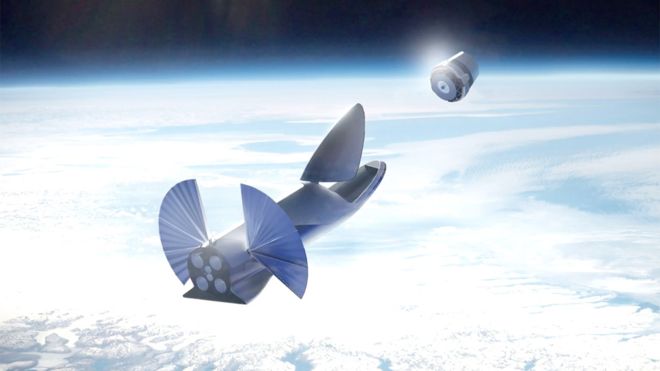The development of the Starship – SpaceX’s super-heavy launch system that will take cargo and crews to orbit, the Moon, and even Mars – has been fraught with setbacks and frustration. But Musk has no intention of stopping and is even planning ahead for the day when the Starship and Super Heavy are making regular flights.
In keeping with this, SpaceX recently released a Payload User’s Guide for consumers that lays out what kind of services the launch system will provide – once it’s up and running. While no price points have been established yet, the guide provides a good summary of the Starship’s technical specifications and capabilities.
These are summarized early in the guide, where it states that “Starship has the capability to transport satellites, payloads, crew, and cargo to a variety of orbits and Earth, Lunar, or Martian landing sites… The uncrewed Starship allows for the transport of satellites, large observatories, cargo, refueling tanks or other unmanned assets.”

What follows is a detailed treatment of the Starship‘s payload fairing’s interface. The fairing is described as a “clamshell structure” that contains an integrator and remains closed until the time of deployment. Measuring 9 meters (29.5 ft) in diameter from the outside, SpaceX claims their fairing is “the largest usable payload volume of any current or in development launcher.”
The guide goes on to say that the geometry of the Starship allows for a 22 m (72 ft) extended payload volume, which can facilitate of novel payloads, rideshare opportunities, and the deployment of entire constellations of satellites (such as SpaceX’s Starlink internet satellites) in a single launch.
The spacecraft also takes a page from NASA’s Space Shuttle, offering the option of placing trunnion-style interfaces on the surface of the interior to accommodate more cargo. Attention is also given to how the launch system will also accommodate standard payload interface systems and electrical interfaces.
The guide then goes on to describe the payload environment in terms of its ability to handle axial and lateral accelerations (which will range from -2 g to 6 g axially and -2 g to 2 g laterally) as well as acoustics and shocks.

In this respect, SpaceX is relying on industry standards and their own experience with the Falcon family of rockets (particularly the Falcon Heavy):
“Utilizing strong heritage and lessons learned from the development of the Falcon 1, Falcon 9 and Falcon Heavy launch systems, SpaceX is designing Starship and Super Heavy to provide as benign of a payload environment as possible.”
What follows, predictably, is a rundown of the launch system’s mass-to-orbit capabilities, based on the absence and presence of parking orbit refueling (POR). To Low Earth Orbit (LEO), which they define as a circular orbit of up to 500 km (310 mi), which in both cases would exceed 100 metric tons (110 US tons).
To Geostationary Transfer Orbit (GTO), the system will be able to send 21 metric tons (23 US tons) without POR and over 100 with it. Potential landing sites are also specified for missions that require payload returns. They include SpaceX’s existing facilities at the Kennedy Space Center in Florida and Boca Chica, Texas.
As for payload deliveries to the Moon and Mars, they indicate that “Starship was designed from the onset to be able to carry more than 100 tons of cargo to Mars and the Moon.”

As for crewed missions, that’s where things get especially interesting. In keeping with SpaceX’s vision of making life “multi-planetary,” the Starship crew configuration emphasizes moving people in style. As they wrote:
“Drawing on experience from the development of Dragon for the Commercial Crew Program, the Starship crew configuration can transport up to 100 people from Earth into LEO and on to the Moon and Mars. The crew configuration of Starship includes private cabins, large common areas, centralized storage, solar storm shelters and a viewing gallery.”
No price information is available yet, but since the launch system is intended to be entirely-reusable, one has to assume it will be competitive with other launch services (and even SpaceX’s previous launch vehicles). What’s more, cost-effectiveness is something that is written right into SpaceX’s mission statement.
At present, it remains unknown when the Starship and Super-Heavy will begin making commercial flights. With the issues they’ve been experiencing testing the Starship prototypes, it is clear that the 2022 deadline for missions to the Moon may not happen. However, Musk is known for being optimistic about his timelines, not to mention his tenacity and perseverance in the face of setbacks.
Further Reading: SpaceX

